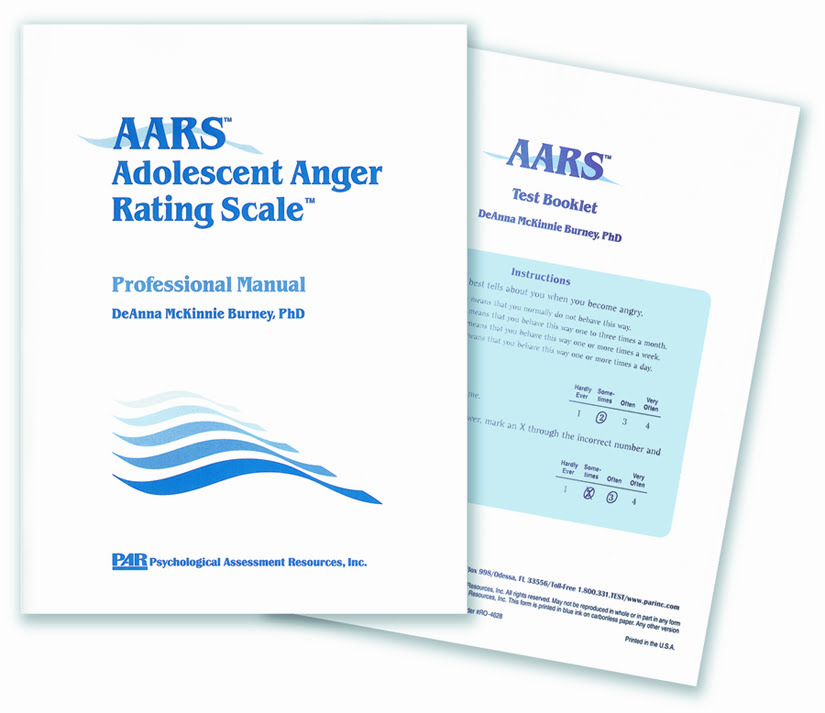
Adolescent Anger Rating Scale [AARS]
Assess adolescents’ (ages 11 – 19 years) response to anger
For ages: Adolescent 11 – 19 years
Administration Type: Paper and Pencil
Administration Time: 5 – 10 minutes for individuals; 10 – 20 minutes for groups
Scoring: Hand Scored
Author: DeAnna McKinnie Burney, PhD
More products available in the 2023 Stock Clearance Sale
Online Forms, Reports & e-Manuals
Click to browse products
Kits
Click to browse products
AARS e-Manual
AARS Introductory Kit
The AARS is a 41-item psychometrically sound instrument that assesses the intensity and frequency of anger expression in adolescents aged 11-19 years. The items are consistent with behaviours identified in the DSM-IV. Elevated AARS scores may help to identify adolescents who are at risk for diagnoses of Conduct Disorder (CD), Oppositional Defiant Disorder (ODD), or Attention-Deficit/Hyperactivity Disorder (ADHD).
Individuals indicate which behaviours they exhibit when angered and how often each behaviour typically occurs – the 4-point response scale ranges from Hardly Ever to Very Often. Scores are reported for Total anger and for three subscales measuring aspects of the adolescent’s typical anger response pattern: Instrumental Anger, Reactive Anger and Anger Control. The goal of any anger intervention program is to help the adolescent manage his or her anger. Practitioners using the AARS will be able to select the most appropriate intervention program for the specific type(s) of anger the adolescent typically experiences.
The AARS Professional Manual provides directions for administration, scoring and interpretation (including case examples) as well as information about the development and validation of the instrument with students in two age groups: middle school (Grades 6-8) and high school (Grades 9-12). Conversions of raw scores to percentiles and T scores are also provided by gender and age group.
Five ethnic groups were represented in the normative sample of 4,187 adolescents. Normative data is provided for boys and girls in middle schools and high schools. Additional information about the normative sample includes grade average, number of suspensions in the past year, number of friends, a rating of friends’ behaviour and the primary person/s with whom the adolescent lives.
Statistical analyses support the use of the AARS in both clinical and research applications. Therapists who employ anger control training may find the AARS a useful measure of behaviour change.
Sample Reports



